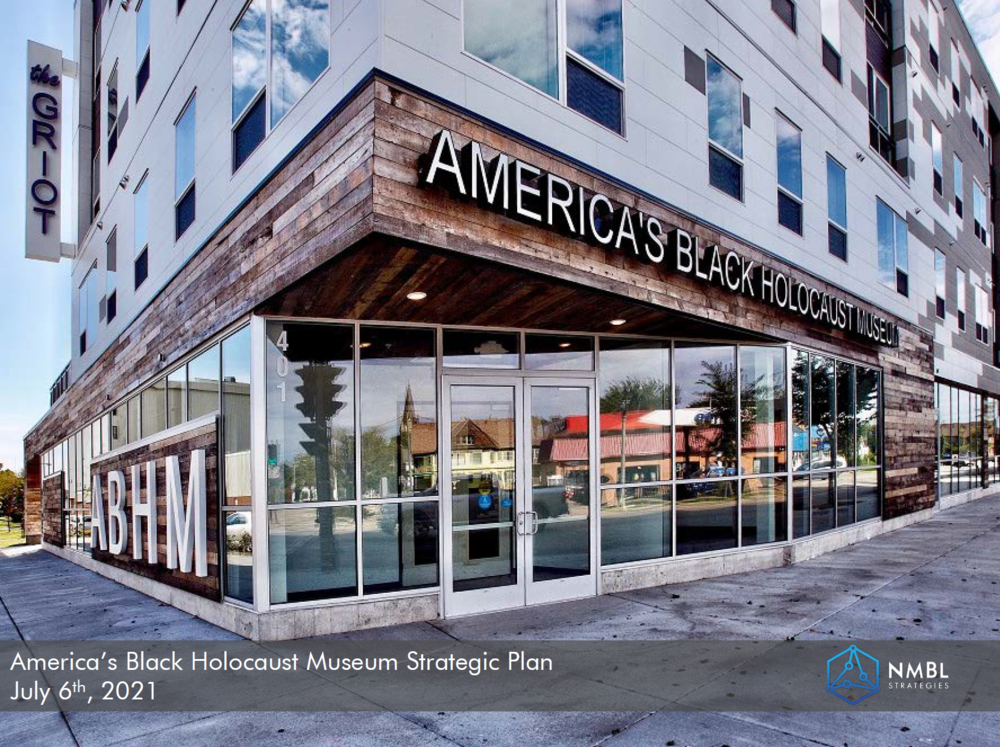It closed 14 years ago, falling on hard times that began after its founder died. On February 25, Milwaukee’s America’s Black Holocaust Museum (ABHM) will reopen, ushering in a new chapter in its 33-year history.
The museum will celebrate Black History Month with a stunning comeback that includes seven galleries that tell the story of Blacks from when their ancestors were Kings and Queens, to the time when their descendants were forced into slavery, to Jim Crow to the Civil Rights Era, to today.
Museum officials hope the facility will boost Milwaukee’s predominately Black Bronzeville neighborhood, where it has operated since 1989. The neighborhood has struggled over the years with disinvestment and unemployment.
The ABHM faced an uncertain future when founder Dr. James Cameron died in 2006. Two years later, the museum closed, and its exhibits were placed in storage. For more than 10 years, the ABHM operated online with virtual exhibits.
In 2020, the museum planned to reopen as part of a $17.7 million redevelopment project, but remained shut when the coronavirus pandemic hit.
In just the last couple of years, two anonymous donors gave a total of $11 million to help the museum create an endowment. One of those donors last December gave a $10 million gift through the Greater Milwaukee Foundation.
Now, museum officials are preparing to open with a brighter future and a facility that tells more than 400 years of Black History in America and Africa.
The museum is spread out over 4,000 square feet. It includes seven themed galleries that display artifacts, documents and interactive exhibits of a specific historical period.
The first gallery, “African People Before Captivity,” includes exhibits that aim to dispel misconceptions that Africa was an uncivilized continent before colonizers and slave owners invaded it. There are exhibits that show the groundbreaking contributions of Africans in mathematics, architecture, medicine, astronomy, agriculture, marine navigation, art, and more.
In the second gallery, “Kidnapped: The Middle Passage,” the exhibit tells the story of how Africans were captured and taken from their homeland between the 1400s and 1800s during the “Triangle Slave Trade.” The story focuses on European slave owners first, followed by their American counterparts.
Over 12.5 million Africans were taken from the shores of African countries in the trans-Atlantic slave trade. Some four million of these men, women, youth and children died during capture, on the voyage, or soon after their arrival in the Caribbean or North, Central and South America.
Exhibits in the Middle Passage gallery include sketches of Africans being kidnapped and images of slave ships.
In the third gallery, “Nearly Three Centuries of Enslavement,” visitors will learn the harsh realities of slavery and the cruel treatment of enslaved Blacks by their owners. Amid the brutality are uplifting stories of resilience by enslaved Blacks determined to survive and provide a future for younger generations. Exhibits include Nat Turner’s Rebellion, abolitionist Frederick Douglass’ famous speech, “The Meaning of July Fourth for the Negro,” and “the Freedmen of Wisconsin,” which chronicles the progress of freed slaves in that Mid- western state.
The fourth gallery, “Reconstruction: A Brief Glimpse of Freedom,” explores the new lives and unfulfilled promises under President Andrew Johnson. The exhibit also details terrorist acts by the Ku Klux Klan and explores a new racial caste system, known as Jim Crow that was put in place after Reconstruction’s failure.
The fifth gallery, “One Hundred Years of Jim Crow,” details economic, political, legal, social and personal oppression of Blacks as Black codes and segregation flourished. The gallery also tells the story of lynchings across the country and the Great Migration of Blacks to states in the North, where they discovered Sundown Towns, segregated schools, libraries, parks and beaches in many cities. The gallery also includes exhibits on the lack of voting rights among Blacks under Jim Crow and measures whites used to keep Blacks from voting.
The sixth gallery, “I Am Somebody! The Struggle for Justice,” explores the “Civil Rights Era” of the 1950s and 1960s. The 1954 landmark U.S. Supreme Court Case that outlawed school segregation is explored as well as the 1955 Montgomery Bus Boycott. There are also exhibits on the 1963 March on Washington and the Voting Rights Act of 1964. The sit-ins at lunch counters to desegregate restaurants are also examined, as well as the 1964 Freedom Summer Project in Mississippi, where three civil rights workers were murdered.
The seventh gallery, “NOW: Free at Last?” questions the economic, political and social gains made by Blacks after decades of marching, protesting and demanding equality in education, jobs and housing opportunities.
The Museum will open February 25 with a ribbon-cutting ceremony at 9 a.m. The Museum is located at 401 W. North Ave., in Milwaukee.






